Tree hunter's eight-year Offa's Dyke search nears end
- Published

Self-declared "tree hunter" Rob McBride is happy to spend most days without speaking to another soul.
The former software engineer is at the heart of a long-running project to record and verify ancient trees along the Offa's Dyke path.
Mr McBride has been working his way along the 177 mile (285km) route from Prestatyn to Chepstow since 2008, logging trees that have historic or cultural significance for the Woodland Trust., external
But a venture that was supposed to take just "a few weeks" is now in its eighth year and there are still 50 miles and hundreds of trees to go.
Mr McBride receives little funding for his ancient tree search as he is classed as a "voluntary verifier".
He can spend days away from his home in Ellesmere, Shropshire, at a time and is out in all kinds of weather.
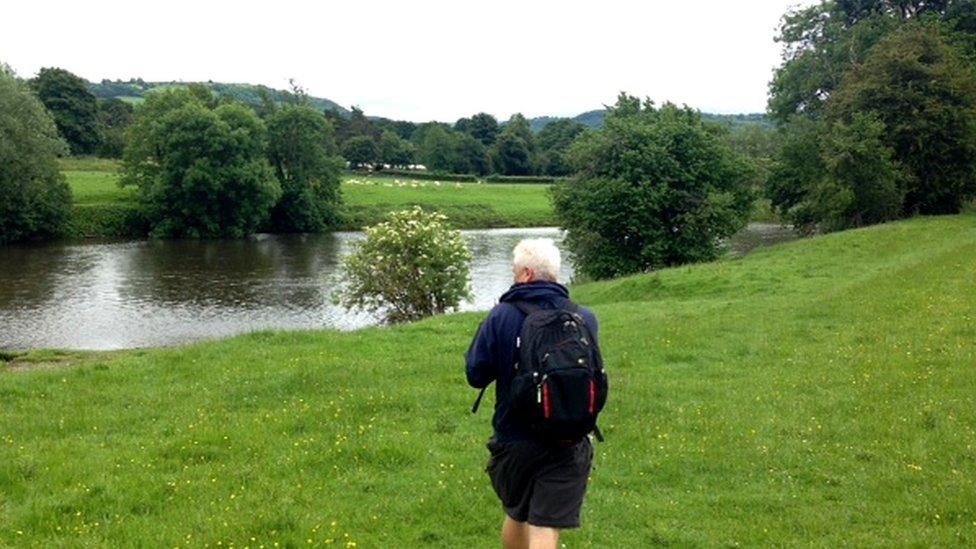
Not only is he walking the national trail Offa's Dyke path but the ancient 8th Century Offa's Dyke scheduled monument - as it often deviates from the trail - so it means almost twice the work.
The dyke itself, built by King Offa of Mercia, dates back some 1,200 years.
The ancient earthworks roughly follow the modern-day border between England and Wales and so the historic trees often mark former parish boundaries and hint at where the ancient boundary between England and Wales once lay.
'Landscape detective'
So what fuels this labour of love and Mr McBride's unquenchable thirst for arboreal knowledge?
"It's like being a landscape detective," he explains.
"Old trees are the last vestiges of a disappeared landscape so I'm often rediscovering trees that have borne living witness to many significant events in Wales' history.
"Much has been written of the castles, the country houses and the battles in and around Offa's Dyke.
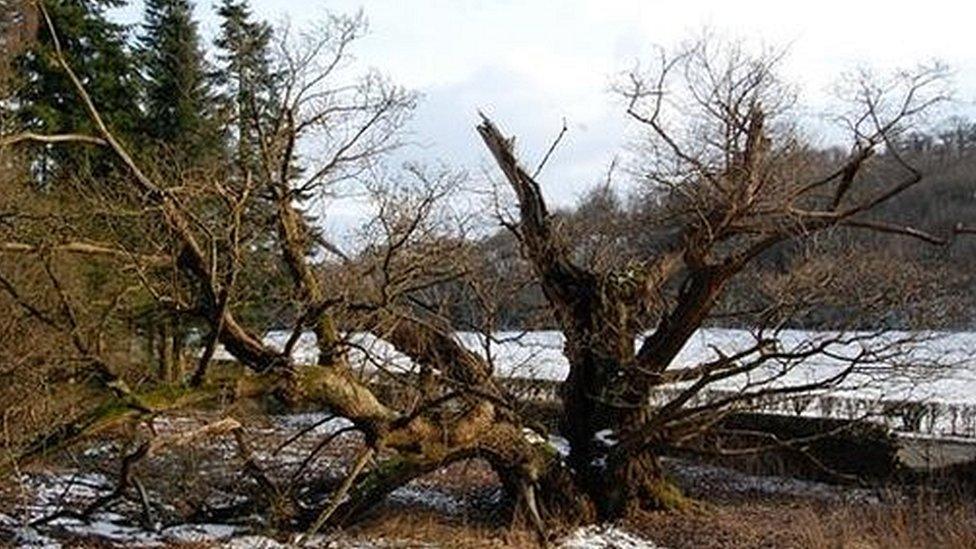
The Great Oak at the Gates of the Dead
"But this is the first time these amazing natural monuments of the dyke have been recorded and surveyed, so I find it very exciting."
Walking with him along part of the route, it is easy to see why it has become something of an obsession for him.
The only sound we can hear is skylarks singing and bubbling brooks, and he says he often encounters barn owls, foxes and badgers on his travels.
His enthusiasm is palpable and at times he walks so fast it is hard to keep up with him.
Mr McBride describes the dyke, which opened as national trail in 1971, as a "linear nature reserve", and says some of the most impressive trees have taken centuries to mature on "undisturbed" and "uncultivated land".
Many were saplings during the reign of Henry VIII in the 1500s.
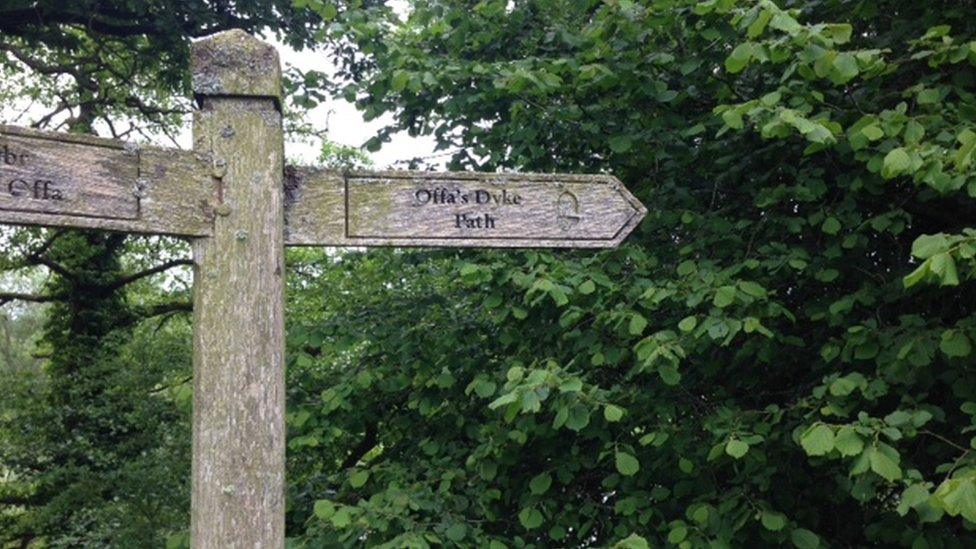
One such tree is the great oak at the Gates of the Dead in Chirk, Wrexham, which is believed to be more than 1,000 years old.
The tree gets its name from when Welsh forces ambushed an invading English army in 1165, and the dead were buried nearby.
The oak is thought to date to the reign of King Egbert in 802, and is near the 1165 Battle of Crogen site.

The Pontfadog Oak, which had recently been covered in snow, blew over in high winds
But the Pen y Maes Oak at Llansantffraid is Mr McBride's favourite tree, and was discovered following a casual chat with a local postman.
"It is nine metres around and 700 years old," he says.
"It has a very significant history and until about 200 years ago was a tree that was pollarded - with branches and leaves regularly cut to feed animals and build fencing.
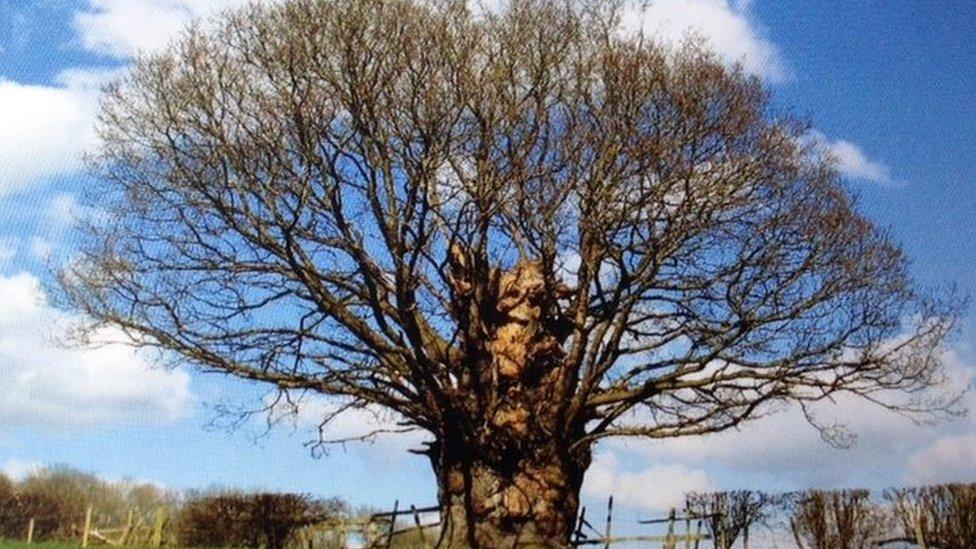
Pen y Maes Oak, Llansantffraid
"Often how the oaks are pollarded gives you clues as to their age - a form of pruning and cultural connection that is lost now.
"One thing that I have learnt in my years of tree hunting is that trees are intrinsically linked to humans and are culturally intertwined with us in so many ways."
He recently discovered Wales' oldest crab apple tree at Gladestry, near Kington in Powys.
He was also very fond of the 1,200-year-old Pontfadog Oak which was the largest oak in Wales until it was toppled by strong winds in 2013.
Legend had it that Welsh princes used to rally troops at the tree.
Owain Gwynedd is said to have met his troops under the oak in the 12th Century before defeating King Henry II of England in battle.

Another ancient tree close to his heart is the Llangernyw Yew in the churchyard of St Digain's church, Llangernyw, Conwy, which is believed to be more than 3,000 years old and is probably the oldest living thing in Wales.
But aside from the historical fact-finding mission, for Mr McBride this has been an intensely personal journey, after a mental breakdown and serious anxiety forced him to end his IT career in Wrexham.
'Trees saved my life'
After two years signed off sick from work, he found himself walking the Offa's Dyke route and feeling reinvigorated.
"Trees saved my life," says Mr McBride.
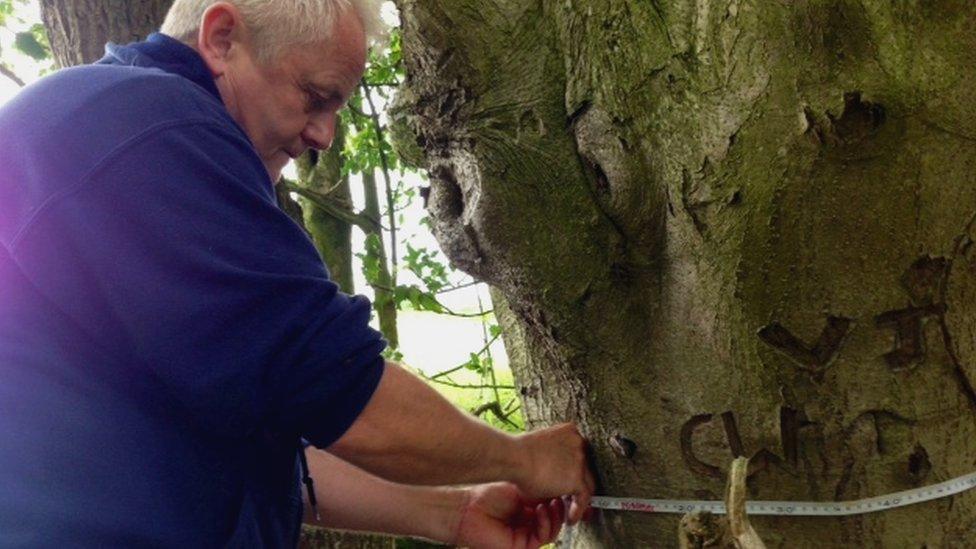
"I was really suffering with anxiety but then I felt so calmed and inspired walking the route - it is the best walk in the country."
Feeling the need to reconvene with nature, he returned to college to study countryside and wildlife, and started volunteering for Shropshire County Council Countryside Service.
He then got talking to a friend who had just discovered a very rare 11m (36ft) oak tree.
"It was over 1,000 years old and was undiscovered until 2009, near Buttington in Welshpool, which is the site of another battle and the dyke runs close to it."
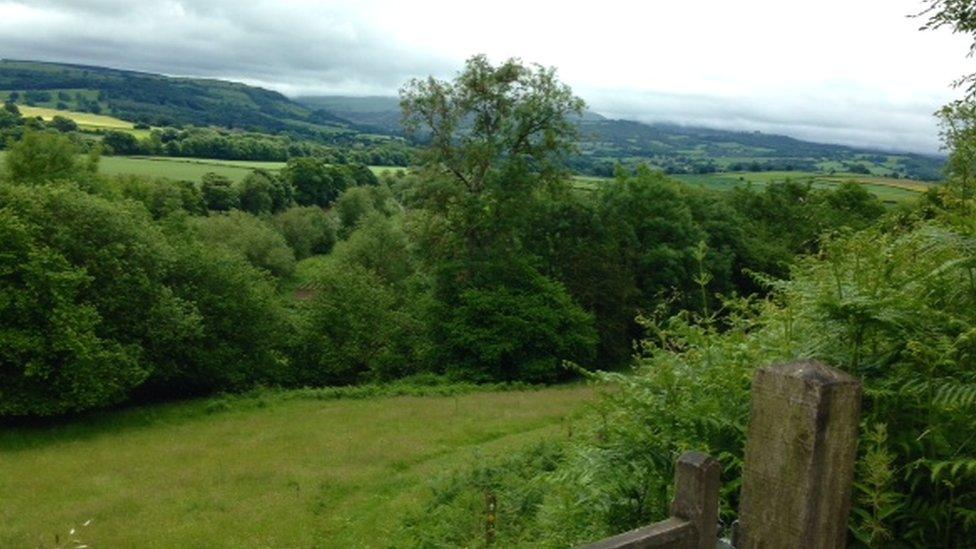
Realising there were so many trees existing in our landscape at risk of having their stories left out of the history books, he felt inspired to get involved in the Woodland Trust's UK-wide Ancient Tree Hunt.
Over the years he has been responsible for recording thousands of important trees, many of which are more than 500 years old, on an interactive map, external.
His passion has also taken him to Europe where he has been heavily involved in the European Tree of the Year awards.
But many of these ancient trees are not protected by any preservation orders as those are usually only handed out in urban areas.
"One of my biggest motivators is that these trees could be cut down tomorrow," says Mr McBride.

Tree hunter Rob McBride makes copious notes during his walks
"However, if we stumbled upon a castle or ancient monument it would be instantly listed and scheduled.
"There has got to be some sort of government protection for these trees but there needs to be proper funding for this to happen."
Along the route, Mr McBride has met dozens of people in some of Wales' most remote areas, gathering anecdotes and video stories about little-known trees on private estates, enabling them to be charted and put on the map.
His note-taking is copious and, with his easy manner, it is not hard to see why people talk to him so freely and share their own memories of trees.
He is now in talks with publishers to write a book about his experience.
His search has also turned him into something of a campaigner for trees.
Recently he was instrumental in saving the 500-year-old ancient Brimmon Oak at Newtown in Powys by helping the campaign for a bypass route to bend around it.
And he is involved in creating the first ever Tree Trail on Offa's Dyke using a smartphone app , external.
Mr McBride is now working his way along the trail into Monmouthshire and hopes the end is in sight.
But even after this journey is finished his quest to chart undiscovered trees will never end if his current passion is anything to go by.
- Published23 February 2016
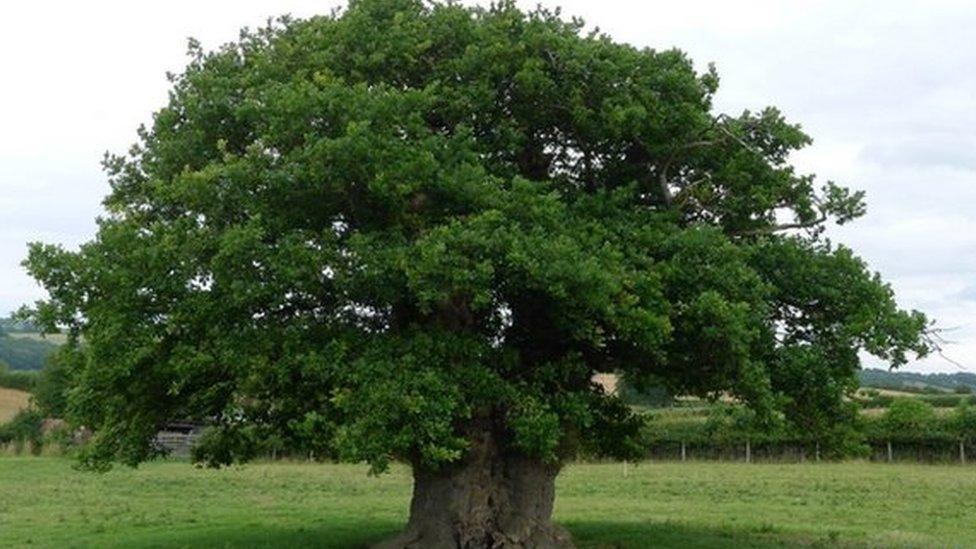
- Published19 April 2013

- Published20 November 2013

- Published25 May 2011
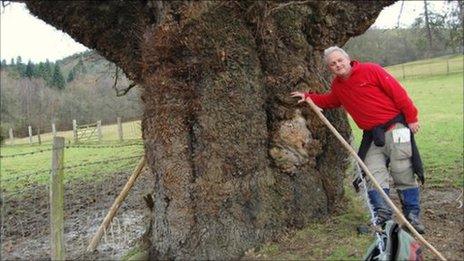
- Published23 May 2011
